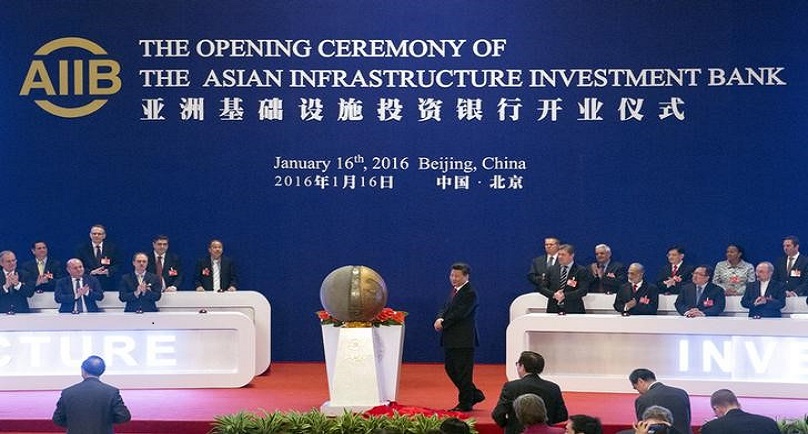
Representatives of the founding nations of the Asian Infrastructure Investment Bank (AIIB) applaud as Chinese President Xi Jinping unveils a sculpture during the opening ceremony of the AIIB in Beijing. (AP/PTI)
The Philippines has grabbed headlines worldwide recently with its rapid foreign policy shift announcement and subsequent balancing act between the U.S. and China. Reasons given for the shift include Filipino unease with U.S. criticism over its domestic, anti-drug campaign (political), as well as the Philippines’ discomfort with U.S. ambiguity with respect to actual U.S. treaty obligations to firmly defend Filipino interests in the South China sea (military). However, an economic factor may have played the largest role in the shift as the Philippines has a hunger for more infrastructure investment, which China’s OBOR initiative and AIIB both look set to satisfy.
The Philippines has just put the world on notice that, henceforth, it desires to be treated as a sovereign entity and with the same respect as its treaty ally, the U.S.. Whether the Philippines’ grievance that the U.S. has actually taken it for granted in the past is irrelevant. What is relevant is that the Philippines apparently perceives this to be the truth.
This policy shift is emblematic of the quickened pace of geopolitics since the end of the Cold War and the onset of globalization. These factors, combined with the realization by all countries that a firm economic footing forms the foundation for future prosperity, has shifted the balance somewhat towards “swing” powers in their dealings with the U.S., China, and Russia. Several of these powers, notably the Philippines and Vietnam, are paying homage to India’s traditional non-aligned stance, both during and after the Cold War.
This homage takes the form of a more multi-vectored foreign policy strategy and will increasingly be a more powerful tool in the tool belts of various Asian middle powers. As U.S.-Russia and U.S.-China hostilities increase globally, this new foreign policy orientation will eventually allow middle powers maximum room for maneuverability between the major powers. Partners and allies alike of the U.S., China, and Russia will all be asking their interlocutors, “What concrete economic benefits (if any) are you offering which I can take back home and further enhance my own domestic legitimacy?”.
With respect to East Asia, both the U.S. and Russia are at an economic disadvantage compared to China, the leading trading partner for most states in the region. This makes it imperative for the U.S., especially, to have TPP ratified and come into effect. This would truly signal to China, as well as the regional states, that the U.S.’ re-balance to Asia indeed has a strong economic, and not just military, component.
Additionally, it’s hoped that TPP passage would eventually strengthen U.S. economic ties to East Asia, reinvigorating its own economy in the process. However, it has been argued that scaled-down U.S. economic cooperation with several regional states due to human rights concerns actually has given a geopolitical opening to China. Because of this, Thailand, Malaysia, and Cambodia may eventually follow the Philippines’ example and formulate a more balanced foreign policy approach between the U.S. and China.
East Asia, however, is only one component in a much larger game played by several powers to unite the entirety of Asia (in some cases with Europe and Africa as well) economically. The Center for Strategic and International Studies (CSIS) has recently unveiled a program detailing several competing visions of “reconnecting Asia” through infrastructure and energy development sponsored by various states.
These visions not only encompass China’s OBOR and AIIB initiatives and Russia’s Eurasian Economic Union (EEU), but plans offered by India, Japan, South Korea, and Turkey as well. The ambitious scale of these plans (particularly by U.S. treaty allies Japan, South Korea, and Turkey) and the increased popularity of multi-vector foreign policies combine to serve as a warning to the U.S. to either up its economic game in Asia or risk losing even more pieces on the Asian geopolitical chessboard.
Video courtesy of CCTV English